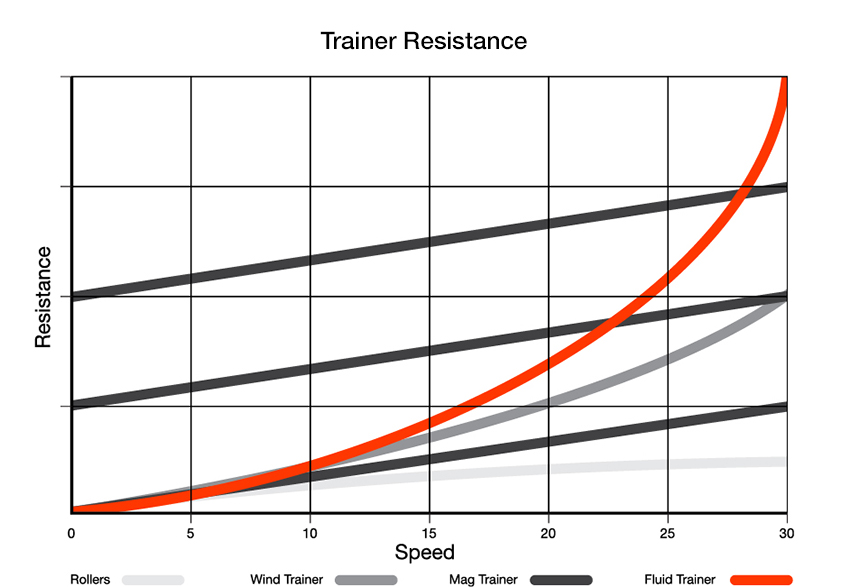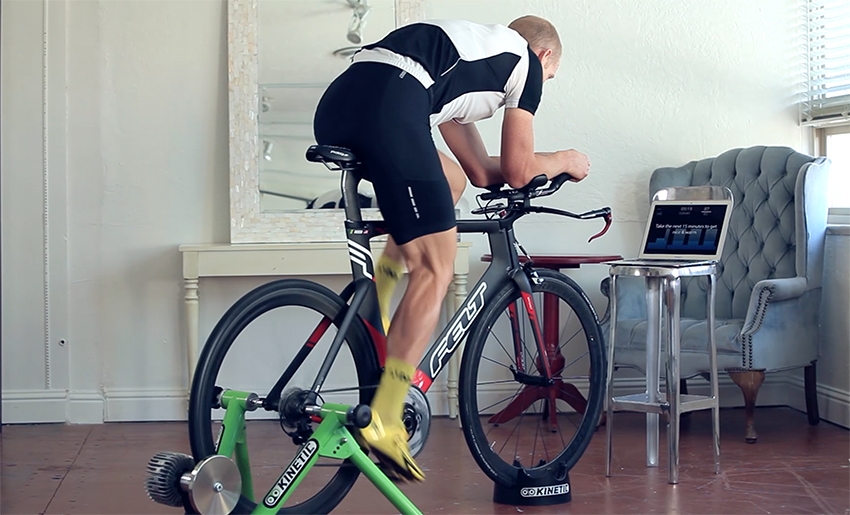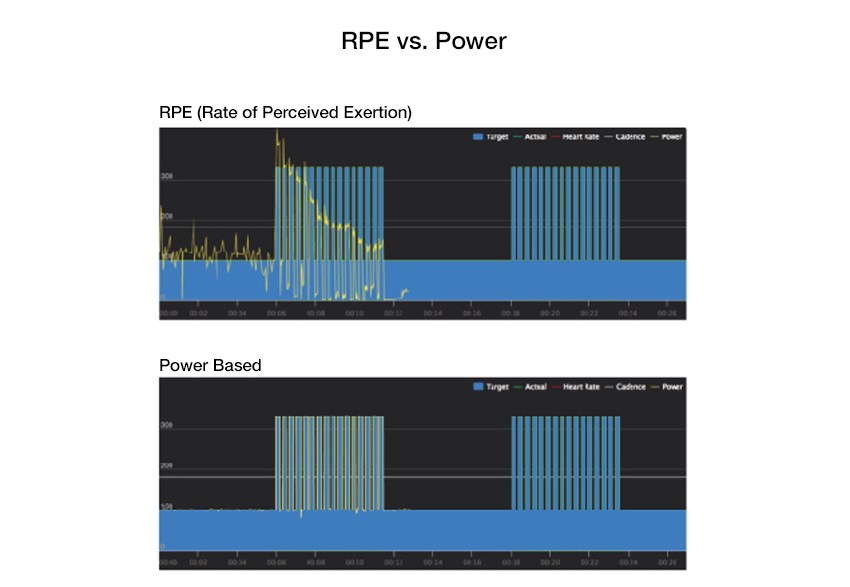Training Smart Indoors
This article is part 3 of 3 in a series focused on maximizing your training. Check out the previous articles here and here.
Just like most things, it’s not if you train indoors but how you train indoors that makes the difference. Here are a few things that can massively improve the productivity of your time on the trainer and make sure you’re training smart.
Trainers
Training smart indoors starts with your trainer. There are hundreds of options to consider, but certain types of trainers deliver different benefits, and depending on your needs, your trainer can make your indoor training sessions much more effective.
Rollers
Rollers have been around for a very long time, so long in fact that some theorize they have been around since before the refinement of modern metals. In all seriousness, rollers are a fantastic way to make sure you are developing efficient muscle recruitment patterns.
They usually offer little resistance, even though some models have attachable resistance units. So while they may not be the best when trying to hit a wide range of power targets with precision, they are a great way to get more out of your indoor training.
Fluid Trainers
Wind and mag trainers are very common, but their close cousin, the fluid trainer, is a comparably priced but much improved option. Fluid trainers have progressive resistance just like you do when riding outside.
This means that as you increase your speed, the resistance increases as well, and some fluid trainers do a very good job of mimicking a real-road feel. If you want step up the quality of your indoor training sessions, a fluid trainer is an easy way to do it.
Electronic Trainers
Electronic trainers are becoming extremely popular as of late, and it’s for good reason. TrainerRoad can communicate with an electronic trainer and adjust the resistance to make sure you are hitting an exact power target with precision. Electronic trainers are expensive, but the quality they add to your workouts is unrivaled.
Setup
After getting your trainer sorted, the next thing to think about is where you are going to put it. It’s common to put your trainer in a dark and dreary basement where you will torture yourself for untold hours, but there’s a better way.
Environment
A room that is well lit and with an environment that is conducive to training can do wonders for your morale. Above all, avoid a room that is full of opportunities for distraction.
A low foot traffic area where solitude can be found is ideal, and by all means, stay away from the kitchen while your significant other is prepping dinner. The last thing you need to be thinking about during a set of intervals is how good that lasagna smells!
Bike Setup
There are a few variables to consider when setting up your bike, but first, make sure you use the bike that you plan to compete on if possible. An old wives’ tale states that you shouldn’t put your carbon bike in a trainer because it would be bad for your frame, but unless you are thrashing around on your bike, you have nothing to worry about.
In fact, if you have an old bike that isn’t set up precisely like your race bike, then you probably will have a problem, but in the form of tendonitis. Training in the exact position in which you plan to race is key as it will build muscle groups and recruitment patterns specific to your position.
In addition to this, making sure your tire pressure is the same and the amount of pressure from the trainer’s roller against your tire is consistent every time you use the trainer will guarantee consistent results.
Regarding tire pressure, follow the tire manufacturer’s recommendations. Roller pressure is a little more subjective, but the goal is to have enough pressure that your tire doesn’t easily slip when pedaling. Take note of how many turns of the dial this requires, and repeat this every time you are setting up.
Some trainers have adjustable height settings, so a wheel block may not be necessary. In most cases they are still preferred as they stabilize the front end and allow you to simulate a climbing position. If you don’t have a wheel block, we can recommend anything stable and stackable.
College textbooks are a great option. Let’s be honest, you either don’t read them anymore or don’t wish to read them, so put them to good use!
Peripherals
If you’re using a computer, TV, tablet/phone make sure that the devices and remote controls are within reach or well-placed so that you don’t have to interrupt your workout to retrieve or reach for them. A well-structured interval workout should be followed with diligence, even during rest periods.
A common solution to avoiding interruptions is placing a stool nearby as a stand for your devices, but we’ve also seen some more creative solutions like ironing boards as a table for your computer or measuring cups hooked to your handlebars to act as a remote holder.
Nutrition
A commonly overlooked area is your on the bike nutrition. For some reason it is natural to think that since you are riding indoors that you won’t need to mix an isotonic drink or carry some on-the-bike nutrition like you would on a big ride outside, but nothing could be further from the truth.
When riding indoors, you can expect to sweat like you never have outside, so refilling your electrolyte stores is especially key. Along the same lines, when you are working out on the trainer, it is generally high intensity work that requires a lot of energy, so staying properly fueled is a necessity. Go ahead, toss a gel or two in your pocket!
Thermoregulation
When your body is in an active state, like during a ride, roughly 75% of your energy consumption goes towards cooling your high-output body, while the remaining 25% goes towards turning the pedals.
When indoors, you have no breeze to naturally cool your body, so the need to cool yourself off is more important than ever. Get the most out of your energy consumption by making sure that you are adequately cooled off.
The first thing to check is your fan. Using one powerful fan and having it pointed at your face/torso will give you the most benefit. Multiple fans can cause turbulence that disturbs the air-flow across your body, so just stick to one fan and make it a good one.
In addition to a fan, keep a hand towel nearby (draped over the bars is a common position) so that you can wipe that perspiration off of your skin. In most cases, having a layer of sweat on your body makes it more difficult to cool off when indoors due to the fact that our fans create a breeze over only a small portion of our body instead of the entire surface area of our body like when we are outside.
Compounding this is the fact that in most cases, we work out in enclosed spaces with little airflow, creating a humid environment and impeding the benefits of evaporation that are usually associated with sweating.
Perhaps most importantly, the steady dripping of sweat can damage the corrosion-prone parts of your bike and potentially harm the clear coat on you fancy frame. 
Structure
After setting the groundwork for a successful workout, you’re ready to get things rolling, but make sure you keep these things in mind.
Measurement
Before beginning your workout, decide on how you are going to measure your work. A heart rate monitor is a good start, but heart rate can be highly variable and is a lagging indicator of effort, so interval workouts can be very hard to properly carry out and structure.
RPE (rate of perceived exertion), although being devoid of any biometric feedback, is actually a decent way to structure interval workouts. RPE is usually used as a 1-10 scale of effort with 10 being the hardest and 1 being the easiest.
The problem with RPE is that it is based off of perception, so as you tire throughout the workout the accuracy of RPE greatly diminishes. For example, if you start your workout with an 8/10 interval for one minute and finish your workout after a full hour of intervals with another 8/10 interval for one minute, your power output will most likely be drastically lower. In this case, for example, 8/10 still feels like 8/10 even though you may be putting out 30% less power.
Of all available options, power is by far the best way to measure your output. Power is objective, meaning that 200 watts is 200 watts regardless of how you feel or what your setup is like. The downside to power, although this seems to be changing, is the high cost of power meters.
That’s why we created VirtualPower. We take the speed data from your speed sensor and calculate your wattage on the fly. It’s an estimation of power, but as long as you make sure your tire pressure and rolling resistance (roller pressure on tire) are the same, then you will have consistent data.
Entertainment
Another natural assumption is that you need to be entertained while on the trainer, but this needs to be reconsidered. Although this makes sense initially, you will generally find that while Seinfeld is great, it is not so great when spinning on the trainer.
What all of us Type-A, self-motivated athletes need is a goal that works towards improvement. This is where TrainerRoad comes in. Being able to visualize your work in relation to a goal is not only effective, it’s extremely motivating for athletes.
This doesn’t mean to say that having a race or even an episode of Game of Thrones on the TV is wrong. In fact, when you have longer, less intense rides with little-to-no variability, then having something to watch can be hugely helpful.
But when you have a tough interval workout ahead of you, focus, more than distraction, is what you need. Having a race up on the TV can really help for motivation as you push to reach your goals.
A personal favorite of mine is watching Tom Boonen’s 2012 Paris Roubaix solo victory while listening to a VeloBeats mix. It’s incredibly inspiring and helps me push harder every time.
Training Plans
Lastly, make sure that your workout is not a full blown hammerfest, unless that is what your training plan prescribes. Contrary to what we may assume, most people actually work too hard on the trainer.
They assume they need to face a dark wall in a basement and pedal until they lose their lunch, but your indoor training shouldn’t be seen this way. Instead, it should be seen as an opportunity to follow your training plan with the utmost precision.
So next time you get on the trainer, make sure you are set up to train smart. Make sure your trainer is going to work for your needs, get setup in a proper place to focus that is devoid of distractions and equipped with the amenities that you will need.
Make sure you are using power to measure your work, if possible, and follow your training plan. If you do these things, you’ll be guaranteed to get the most out of your indoor training.
This article is part 3 of 3 in a series focused on maximizing your training. Check out the previous articles here and here.



